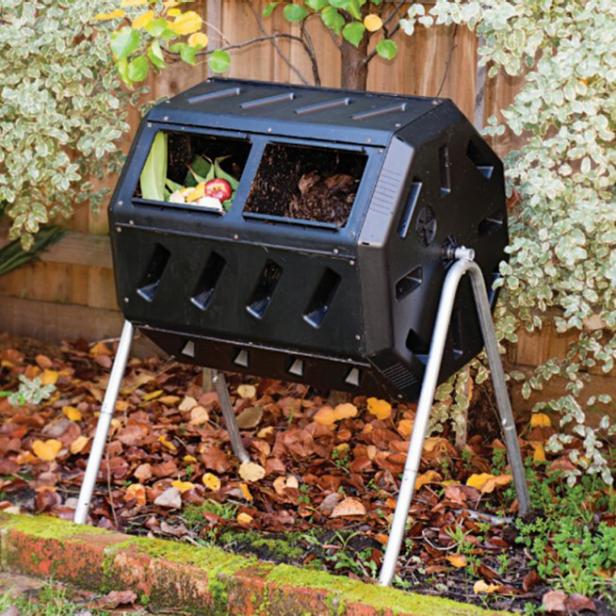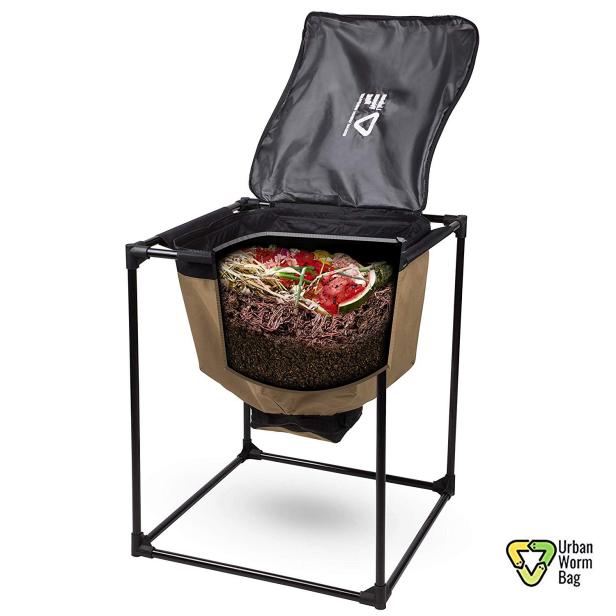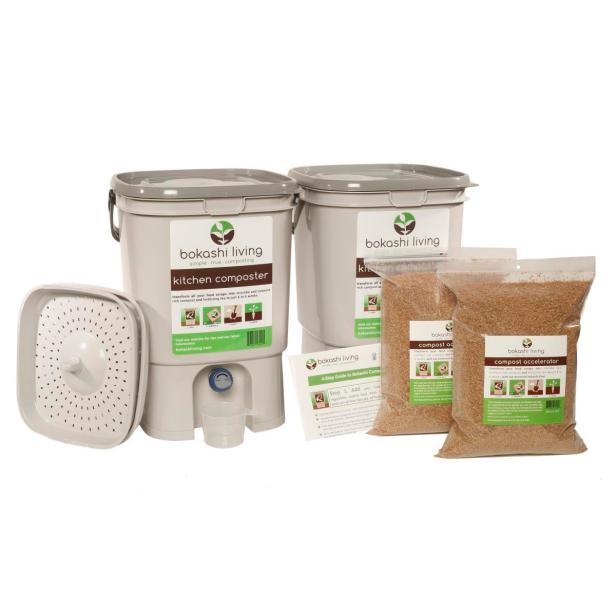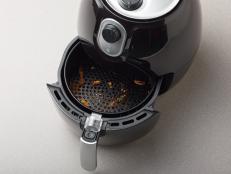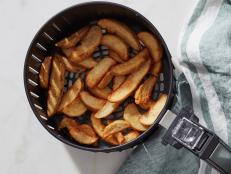A Beginner's Guide to Composting
Here's how to start making the most of your food scraps.

Anchiy/Getty Images
At-home composting has become more popular than ever thanks to a growing interest in sustainability and eliminating food waste. But for beginners, the undertaking can be daunting — not to mention, tainted with the fear of smelly apple cores and rotting banana peels stinking up the kitchen. Luckily, at-home composting is a fairly simple process if you have the right tools and some basic knowledge. Here’s everything you need to know to start composting today.
What Is Composting and Why Does It Matter?
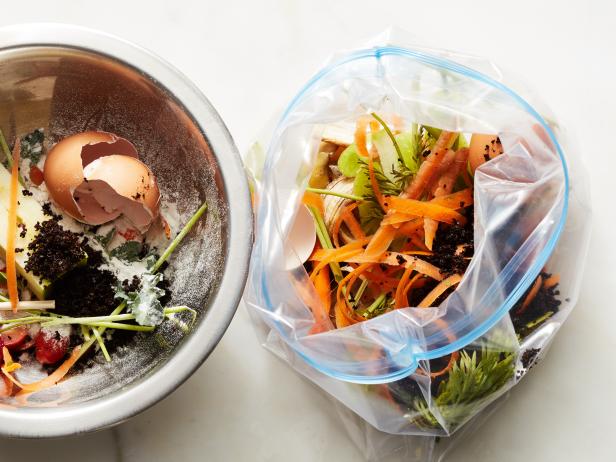
Kate Mathis
“Composting is the process of breaking down biodegradable material — food waste, yard waste, manure, animal parts, insects — aerobically (with proper air flow), using millions of micro- and macro- organisms,” says Luis Chen, founder of Wormies Vericompost. The finished product can, according to the Environmental Protection Agency (EPA), improve both soil and water quality, help plants grow more quickly and successfully, and reduce the need for chemical fertilizers. Farmers and commercial gardening companies have been composting for decades, and now at-home composting is also on the rise: Americans composted 2.6 million tons of food scraps (6.3 percent of all food) in 2017, up from 1.84 million tons (five percent of food) in 2013.
Right now, most food waste in American ends up in landfills, which prevents it from decomposing properly. “When biodegradable waste ends up in landfills, it decomposes anaerobically (without proper air flow) and produces greenhouse gases, particularly methane, that affect the climate,” Chen says. And since an estimated 28 percent of all trash in the United States is compostable, landfills aren't always the best solution for trash.
What Can You Compost?
No matter which method you choose, it’s best not to add meat, bones, oils or cheese to your compost piles, says Frank Franciosi, executive director at the U.S. Composting Council. These are more likely to attract pests, and decompose more slowly. All other plant matter — fruits, veggies, grains, nuts, seeds, legumes — is fair game!
And, “stay away from composting pet wastes,” Franciosi says. “Most backyard composting bins cannot generate enough heat to kill the possible pathogens in pet waste.”
If You Have Space, Compost Outside.
“For people with outdoor space at home, the easiest way to start composting is in in your backyard,” Chen says. While you can do this by burying a pile of waste and yard scraps, that’s a bit more complicated, and not always an option. “Most cities require an enclosed compost bin to prevent pests,” Chen says. This is the route we recommend.
The larger your bin, the better, says Franciosi. As food and other materials break down they create heat — more stuff means more heat, which helps everything break down faster.
The Yimby Compost Tumbler is a good bet. You rotate it every few days to keep scraps moving, which helps ensure that everything is breaking down at the same rate. Your compost is ready in two to six weeks, when it’s dark and soil-like.
In terms of what to compost in an outdoor bin, the EPA recommends using equal parts “greens” (food scraps and fresh grass clippings) and “browns” (yard material like dead leaves, branches and twigs), and moistening the browns with water before you add them to aid the process. Temperature is also key for decomposition and killing pathogens. “Buy a backyard composting thermometer to check that you’re getting temperatures of 130 degrees F,” Franciosi says. This Greenco Gardening Compost Soil Thermometer will do the trick.
The Easiest Way to Compost Indoors Is to Send Your Food Scraps to Compost Somewhere Else.
Indoor composting is a bit more involved than just dumping food waste into a bin (more on that below). If that’s your ideal composting scenario, you may want to consider sending your food waste to be composted off-site. “Many cities have compost services that we come to your home to pick up kitchen food scraps for a subscription fee,” Franciosi says. He also recommends looking up drop-off locations, like farmers markets or gardening centers, in your area. (Here’s a state-by-state list of resources.)
This is where those popular countertop compost bins you've likely seen come in. These bins are not meant to compost waste, and just serve as a holding spot for your scraps until you can bring them somewhere else to be composted — either in your backyard or a city service. Collect scraps in a small bin lined with a biodegradable bag like these 3-gallon BioBags.
The Best Way to Compost Indoors Is By Using Worms.
Don’t freak out! To really compost indoors, you’ll need more than just a countertop compost bin. If you don’t have any outdoor space, you’ll need to invest in an indoor system — and that could mean investing in worms. Chen recommends the Urban Worm Bag, made of breathable fabric that allows for air flow and controls odor. The Hot Frog Living Composter is another, smaller option.
Instead of relying on “browns” and naturally occurring outdoor organisms, indoor composting generally relies on worms to eat your plant waste and poop it out (yes, really), Chen explains. You’ll need to buy worms separately, and our experts recommend Uncle Jim’s Live Composting Worms.
With the Urban Worm Bag, you add worms first, then food scraps on top — in four to six months, there will be enough worm castings (worm waste, which is your compost) at the bottom that you can unzip the lower flap and harvest it, leaving worms and newer scraps to keep decomposing. The Hot Frog Living Composter has three layers — you start by filling the bottom one with scraps and worms, working your way up as each one fills. In about a month, the bottom layer will be ready for use. Just like with outdoor composting, you’ll need to hit a temperature of 130 degrees F to kill pathogens, so you'll also need a thermometer here.
By properly tending to these indoor bins — storing them in a place with good airflow, and adding new scraps and removing finished compost regularly — you should be able to avoid odors, reports the EPA.
You Can Compost Indoors Without Worms — Sort Of.
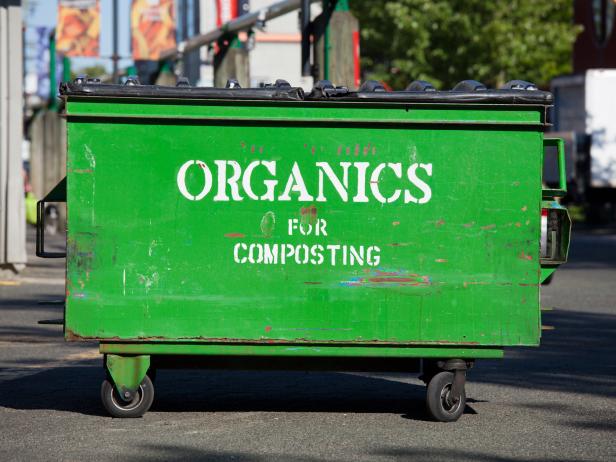
carterdayne/Getty Images
If worms are a no-go for you (hey, we get it), it is possible to set up a countertop compost bin without them. In lieu of natural bacteria from an outdoor environment, you need to add your own to start the indoor composting process. You can do this by adding a scoop of soil to a composting bucket, as the millions of organisms in the soil can help break down food waste. But there are some caveats. “There is a high probability that the end product will be anaerobic, not very beneficial as a fertilizer,” says Chen. “The bucket might turn really stinky as well, a sign of the anaerobic environment due to the lack of earthworms and other macro organisms that help break down scraps for the micro organisms."
Another method of indoor composting sans worms is the bokashi method, which calls for adding special probiotics (bacteria) to your indoor food scraps, which ferments them and kills microbes in about four weeks. To prevent odors, you need to continuously drain the liquid that gathers at the bottom, which is known as bokashi tea. This liquid can be used to water indoor or outdoor plants. A plus of the bokashi method is that you can add meat, bones and dairy to these bins, which are not usually recommended for other methods of composting.
No matter which method you use here, at the end of the process, your scraps will be fermented but not fully broken down into compost. They still need to be buried in a garden or added to another compost pile to fully turn to compost. (We didn’t say this is the most efficient method!)
How To Use Your Compost
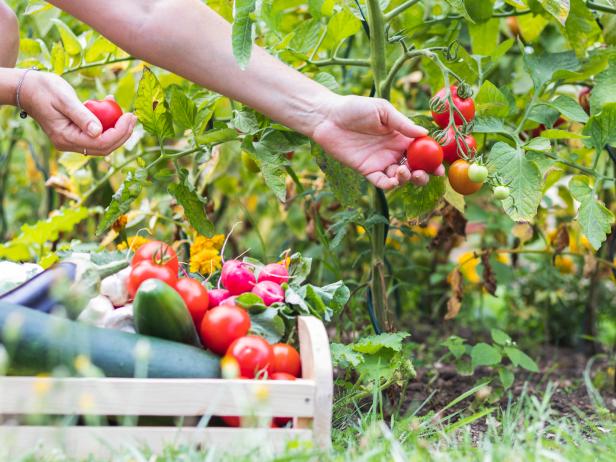
Zbynek Pospisil/Getty Images
If you have a garden, experts recommend adding up to a half-inch of compost on top of the soil you’re already growing plants in. If you’re starting new flower beds or potting plants, use a mixture that’s 30 to 50 percent compost, and 50 to 70 percent soil.
If you can’t use any or all of your compost, One Green Planet recommends donating it to neighbors who garden, or to community or school gardens. You can even call or email a local farm, to see if they’ll take it!
Should You Compost?
Whether you choose to compost at home, or just collect food scraps to be composted elsewhere, doing so can have a seriously positive impact. You’ll be helping reduce both greenhouse gases produced by food in landfills, and the 30 to 40 percent of all food in America that gets wasted. That certainly seems worthwhile.
Related Content:

























